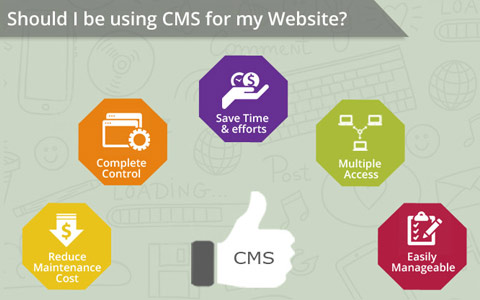Top 10 Web App Security Threats To Not Avoid 2023
 September 11, 2023
September 11, 2023 Mobile Apps Mobile Apps Development Web Application Development Services
Mobile Apps Mobile Apps Development Web Application Development Services
“Security should be built into every layer of a web application, not just added as an afterthought.”

We are living in an age where we depend on the internet and the web for information and services. That’s the reason web attacks have become more prevalent and that includes data breaches, which affect businesses of all sizes and industries. To mitigate these threats, companies must prioritize security during web app development. In this blog, we will focus on highlighting major threats.
Midas is your trusted partner for Web and App Development Services. Our ISO German certified company helps you with thorough site testing and quality assurance of your web and app products. Feel free to give us a call for consultation and suitable solutions for your business needs!
Web Apps & Security Threats:
Web applications, unlike traditional desktop software, are accessible from various devices through web servers, leading to their widespread use. However, this also exposes them to a rising number of cyberattacks and threats. The OWASP highlights the top ten flaws that developers and companies should prioritize addressing.
Top 10 Web App Security Threats You Should Address:
1. Broken Access Control:
Broken access control in web applications occurs when user access is improperly configured. This can allow hackers to exceed their authorized privileges. This vulnerability can lead to unauthorized access, modification, leakage, or destruction of sensitive data and files.
This flaw was identified in 94% of tested web applications by the OWASP and had the highest frequency, with over 318,000 occurrences in 2021, as reported by the Common Weakness Enumerations (CWEs).
2. Cryptographic Failures:
Cryptographic failures, formerly referred to as “Sensitive Data Exposure,” present a significant security risk.
These vulnerabilities arise when web applications employ weak cryptographic algorithms like SHA-1 or RIPEMD160, poorly protecting sensitive data during transmission and at rest.
3. Injection & Security Threat:
The injection of malicious code into web applications is a prevalent method employed by attackers to execute unintended queries or commands, potentially gaining access to confidential data.
Common techniques for injection attacks include SQL injection, Cross-site Scripting (XSS), and OS command injection.
These vulnerabilities often stem from a lack of proper validation, filtering, or sanitization of user input.
4. Insecure Design & Security Threat:
Insecure design is a recently added vulnerability to the OWASP’s list of web application security risks. It pertains to failures in establishing secure architectural and design principles or patterns.
Unlike development-related flaws that may arise during the project development process, insecure design vulnerabilities persist even if the development process is flawless.
This is because developers may not be adequately instructed on implementing essential security controls.
To mitigate this risk, it is crucial for your company to establish a comprehensive business risk profile, which helps determine required risk levels and prioritize major threats effectively.
5. Security Misconfiguration & Security Threat:
Security misconfiguration occurs when web applications are configured insecurely, leading to vulnerabilities such as insecurely configured features, headers, default passwords, and accounts.
Such misconfigurations fail to restrict access to external resources and may grant excessive permissions to user accounts.
Hackers or site attackers exploit these weaknesses to illicitly access accounts, steal user data, and compromise the security of the application.
6. Vulnerable & Obsolete Components:
Web applications become susceptible to cyber threats when developers are unaware of the versions of components used in both the backend and front end.
Additionally, this vulnerability arises when components are unsupported, outdated, misconfigured, or infrequently quality tested for vulnerabilities.
7. Identification & Authentication Failures:
Identification and authentication failures occur when web applications do not adequately verify the user’s identity, establish secure authentication methods, or manage sessions effectively.
This security risk becomes evident when applications allow the use of default, weak passwords or implement ineffective multi-factor authentication.
8. Software & Data Integrity Failure:
Software and data integrity failures occur when an application’s infrastructure and code fail to protect software and user data from integrity violations and breaches.
This problem arises when an application relies on untrusted libraries, plugins, or modules or permits automatic updates without prior integrity verification.
Web assailants can exploit this weakness to gain unauthorized access, upload malicious updates, and compromise systems.
9. Security Logging & Monitoring Failures:
Security logging and monitoring involve tracking and recording all data and incidents within a system. Failures in this area can lead to the oversight of vulnerabilities that firewalls or scanners may not detect.
While this vulnerability is relatively common, it can be challenging to detect until organizations experience failures and address them. This delay in detection can slow down responses to data breaches and security incidents.
10. SSRF (Server-Side Request Forgery):
This problem occurs when web apps do not verify user-supplied URLs before retrieving data from the source. While SSRF receives relatively less attention in Mapped CWEs, its severity has increased due to architectural complexity and the prevalence of cloud services, making it a noteworthy concern.
Conclusion:
With evolving technology, the usage of web applications will also continue to grow, which also increases the potential for software threats. It is crucial to remain vigilant regarding these security risks and take proactive measures to mitigate them. Midas serves as your trusted technology partner, providing comprehensive web development, app solutions, and software testing services in India. Feel Free To Contact Us For Further Information, and stay tuned for our upcoming blog updates for valuable insights.
popular post
-
Top 4 Web Development & Design Trends for 2017

-
Did You Know These 10 Ways To Enhance Your Site Accessibility?

-
Should I be using CMS for my Website?

Categories
- Internet Marketing (13)
- Software Development (8)
- Mobile Apps Development (44)
- Web Designing (32)
- Web Development (60)
 business@midaswebtech.com
business@midaswebtech.com




